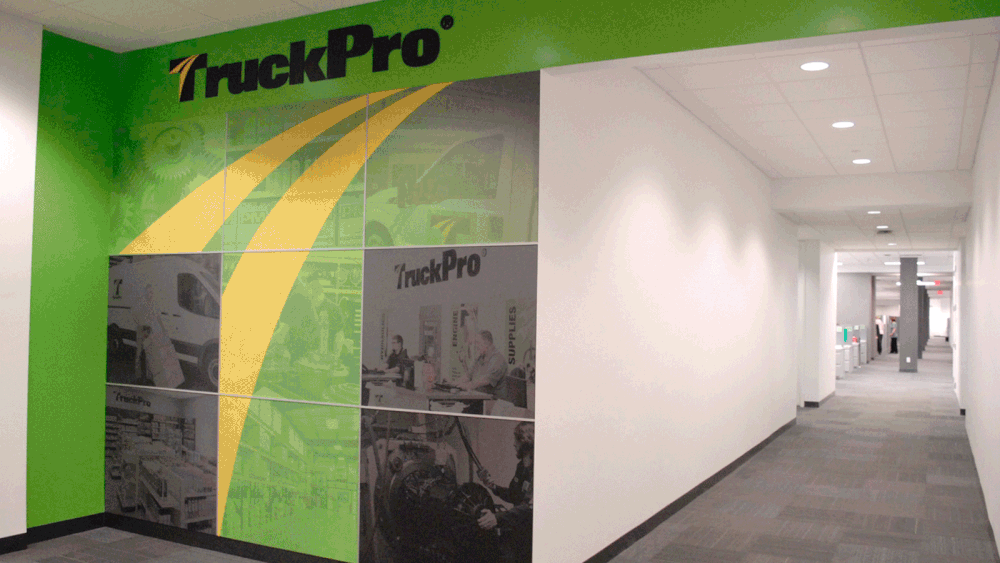Environmental graphic design is a multidisciplinary design field in which graphic design, architecture, sculpture, lighting, landscape & other fields are used by creatively integrating concepts into the built environment to improve user experience.
These changes within a project are articulated via a wide range of applications and techniques. To name a few, they can take the form of signage, identity, super graphics, art installations, and strategic color use. Today, environmental graphic design is still used for telling a story, just in a more sophisticated way.
What is Environmental Graphic Design?
Environmental design, often associated with the term experiential design, includes the design of everyday environments that can communicate with the space of individuals. Environmental design incorporates graphic design, architecture, interior design, landscape design & industrial design to build something much more than a setting: a venue.
Environmental design has the potential to make the space more insightful, more manageable, and more memorable for its guests to navigate. This is to have a clear understanding of elements of design such as visual hierarchy and color, understand industrial design plans, and interpret architectural blueprints quickly.
Environmental Graphic Design brings so many similar fields of design together and has an infinite capacity to add the wow factor to space, whether inside, outside, or even connecting the two.
Five Types of Environmental Graphic Design
Environmental graphic design is a vivid topic. Let’s break it down by looking at the different kinds of elements that exist in environmental graphic design, and some modern and exciting ones.
Branded Environments
Branded environments are the main physical spaces where workers and consumers communicate on a day-to-day basis. Environmental graphics bring the room to life through storytelling while setting the mood for how you would like people to navigate the environment.
From their very first step into your space, there should be portrayals of your brand that give a sense of belonging and understanding. Elements in the entryway could be your logo or banners listing your values in the lobby through words and images. As someone walks through your space, they should feel and see a well-crafted story that takes them on a genuine journey of brand experience.
Signage and Wayfinding

A visual path through an environment is designed by signaling and wayfinding. These are the instruments that help people navigate your room, but they should still feel connected to your brand. The role of the individual designing a wayfinding system is to notify the person of their current position, their desired place, and how to get into the environment from one to the other.
It is helpful to have wayfinding everywhere, but it is essential to have it in hospitals, workplaces, parking garages, and major cities for those who have little time for recreation. Using consistent brand design components such as color, shape, icons, signage & wayfinding placement, you can help direct people more efficiently from one location to another.
Interactive Media
It is no surprise that interactive media, with the growth of digital technologies & how material, movement & interaction can boost user experience between people and spaces, plays a more important role in environmental graphic design.
More than ever, people will become a part of your brand by interacting with it via virtual reality, video games, animation, and video. By creating this two-way communication, you can activate human sensory touchpoints, such as sound, touch, and sight. This will increase the efficiency of your room to make a lasting impression.
Exhibition
The exhibition design is an environmental & experiential design that relays visitor information through architecture, graphic design, interaction design, lighting and audio, and technology. This kind of designer’s role is to use these elements to create an atmosphere that tells stories effectively and attractively.
Such designs may be a single exhibit as they will be at a trade show, or they can be spun around an entire house as they are in a museum. Those rooms can be designed to be viewed from behind a piece of glass.
Interactive experiences
UX brings this kind of environmental design; it focuses on user interaction with an entire physical room. Points are designed within a room to educate, prompt, and inspire those who interact with them. These points, referred to as touchpoints, are created to link users with the concepts behind the world they are in. Interactive experience design, inherently, is a more physical and digital medium than other types of environmental design.
Instead of having to recognize this style from a distance, these displays are designed to be affected. Designers involved in developing an interactive experience plan need to be highly knowledgeable in user-based research so that their projects can be open to the widest possible audience.
If the appropriate effort is made, older people, people with disabilities & people from abroad can be included in this potentially universal and inclusive tool; that’s what a good design looks like.

Environmental Graphics Design has advanced rapidly from signage and wayfinding to placemaking over the past few decades. It is on the way to becoming part of the smart city concept of the digital interface of the public.






















One Response
Hi, Shreya Berry
I just finished reading your post on “Environmental Graphics”.
Thanks again for sharing your expertise—I’m looking forward to your next post!